Anti-aircraft artillery of Ukraine
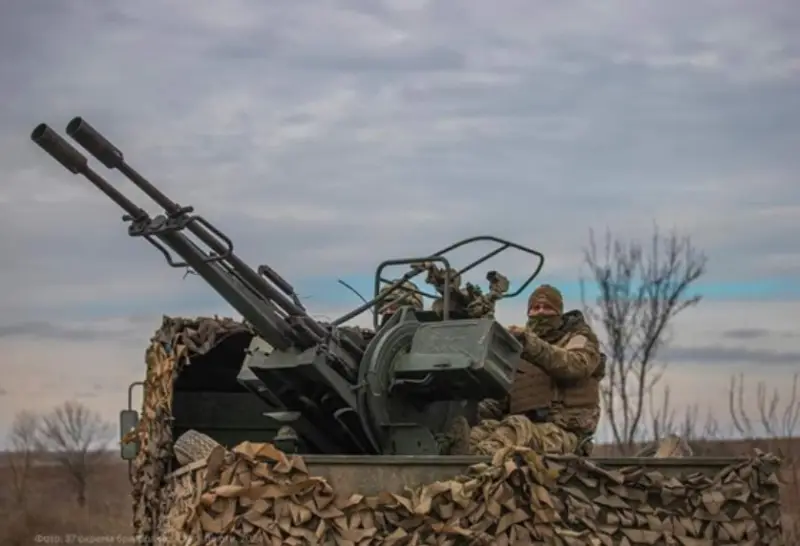
Before the start of a full-scale armed confrontation with Russia, Ukrainian military air defense units and warehouses had several hundred 23-mm twin towed ZU-23 anti-aircraft guns and a little more than four dozen self-propelled ZSU-23-4 Shilka. Almost all 37-mm assault rifles mod. 1939 (61-K) and sparky arr. 1948 (B-47), which were in storage at the time of the collapse of the USSR and went to Ukraine, were disposed of as obsolete in the late 1990s.
According to some reports, the Ukrainian Navy may have retained at its disposal a small number of twin shipborne installations 25-mm 2M-3M, 37-mm V-11M and 57-mm ZIF-31, dismantled from decommissioned boats and ships. As of 2014, there were approximately two hundred 57-mm AZP-57 (S-60) assault rifles in reserve. Up to two dozen 100-mm KS-19M2 anti-aircraft guns were mothballed until 2022.
From the second half of 2022, European states transferred to Ukraine towed automatic anti-aircraft guns of 20 mm, 23 mm, 40 mm and 57 mm caliber, as well as 23 mm and 35 mm self-propelled anti-aircraft guns.
The mobility of towed small-caliber anti-aircraft artillery leaves much to be desired, and without the use of centralized anti-aircraft fire control devices in the battery, the effectiveness of firing at enemy air is relatively low, at the same time, such installations can be easily camouflaged, they are very cheap and easy to master.
If used correctly and on a large scale, rapid-fire anti-aircraft guns can create big problems for aviation, operating at low altitudes, and, in addition, towed anti-aircraft guns, like self-propelled guns, can be successfully used against manpower and lightly armored vehicles.
20-mm Zastava M55 and M75 anti-aircraft guns
At the end of 2022, 20-mm Yugoslav-made M55 and M75 installations were noticed in the Ukrainian Armed Forces. According to unconfirmed reports, several dozen of these triple-barreled and single-barrel anti-aircraft guns were supplied by Croatia.
The built 20-mm anti-aircraft gun M55 from 1955 to 1971 was produced by the Yugoslav weapons by Crvena Zastava. The creation of this towed weapon was initiated by the command of the Yugoslav People's Army after the military tested the M51 installation, created on the basis of the Hispano-Suiza HS.804 automatic cannon for 20x110 mm ammunition.
A fragmentation-incendiary projectile weighing 132 g left the barrel at a speed of 840 m/s, and an armor-piercing tracer weighing 165 g accelerated to 780 m/s. An anti-aircraft gun with a rate of fire of 750–800 rounds/min could effectively hit airborne and lightly armored ground targets at a distance of up to 1 m. The maximum firing range for air targets was up to 500 m. For ground targets, up to 2 m.
Placing three 20-mm automatic cannons on a wheeled carriage made it possible to increase the density of fire and increase the likelihood of hitting a target. The maximum rate of fire of the M55 installation can reach 2 rounds/min, and the practical rate of fire is 250 rounds/min. It is fed from 700-round drum magazines, but smaller capacity compact magazines can also be used.
The weight of the installation in combat position is 1 kg. There is the possibility of all-round firing, vertical aiming angles: from –100 to +5°. Calculation – 83 people. One gunner can fire. The wheel travel allows towing at speeds of up to 6 km/h. Transportation in the back of a truck is also possible.
M55 anti-aircraft guns were very actively exported and participated in many local conflicts. After the collapse of Yugoslavia, a significant number of them went to Serbia, Croatia, Slovenia and North Macedonia.
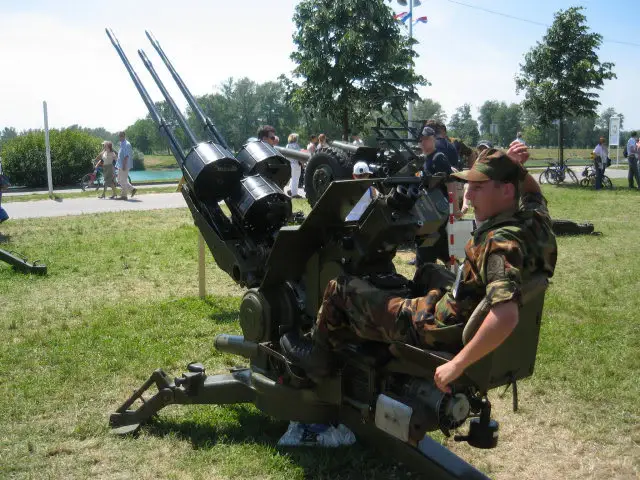
20-mm triple anti-aircraft guns cannot now be considered an effective air defense system against modern combat aircraft and helicopters, but they are quite capable of successfully combating such relatively light targets as UAVs.
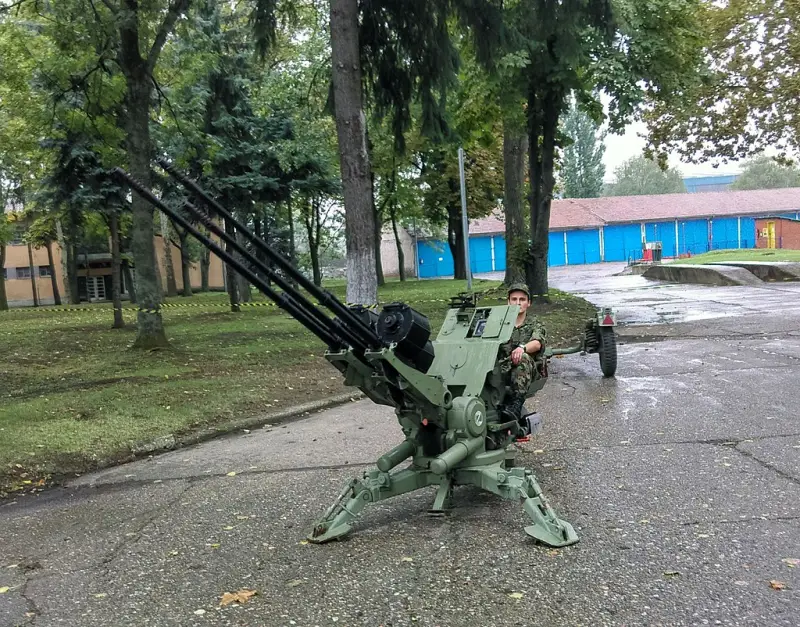
It is known that most of the Ukrainian M55s have been transferred to territorial defense units and are used to protect stationary objects.
In the early 1970s, Crvena Zastava designers designed a lightweight single-barrel M75 mount that could be disassembled into parts and transported over a considerable distance on foot or in packs on horseback. Thus, the Yugoslav 20-mm anti-aircraft gun was a functional analogue of the Soviet 14,5-mm ZGU-1. In the past, the M75 was very popular among various kinds of insurgents and fighters of national liberation movements.
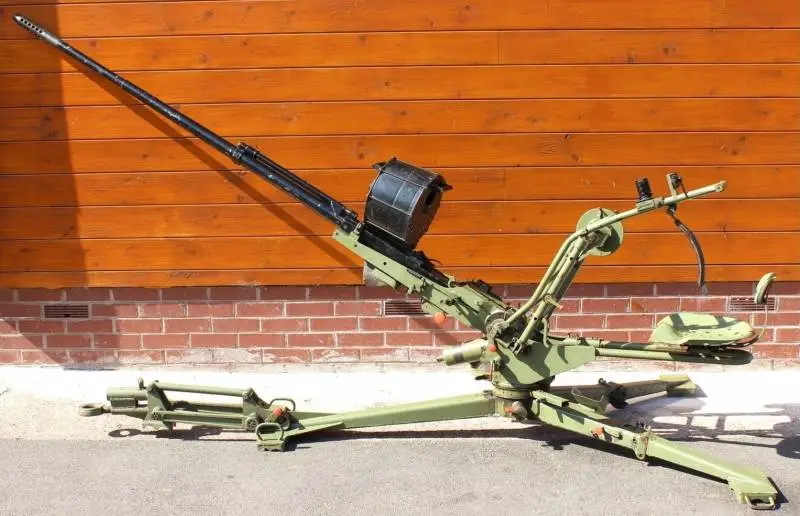
The mass of the M75 installation in combat position is 232 kg. In the stowed position, with wheels, the weight reaches 275 kg. Towing is carried out by an army SUV, which also transports crews and ammunition.
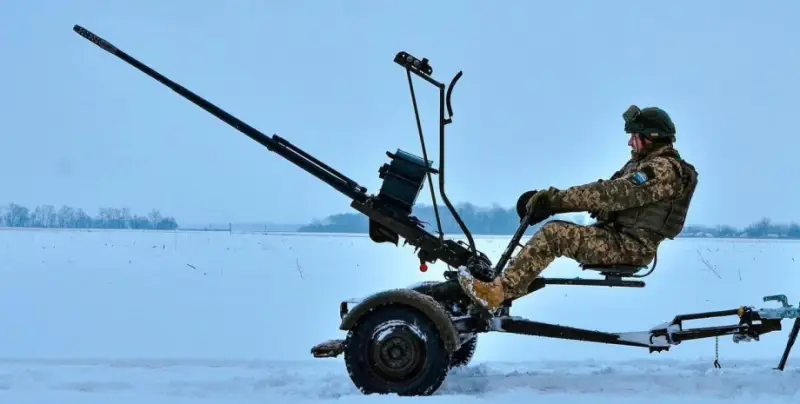
In case of emergency, fire can be fired without separating the wheel drive, but the shooting accuracy is worse.
A significant part of the M75 units transferred to Ukraine are installed on pickup trucks and are used as part of mobile air defense groups.
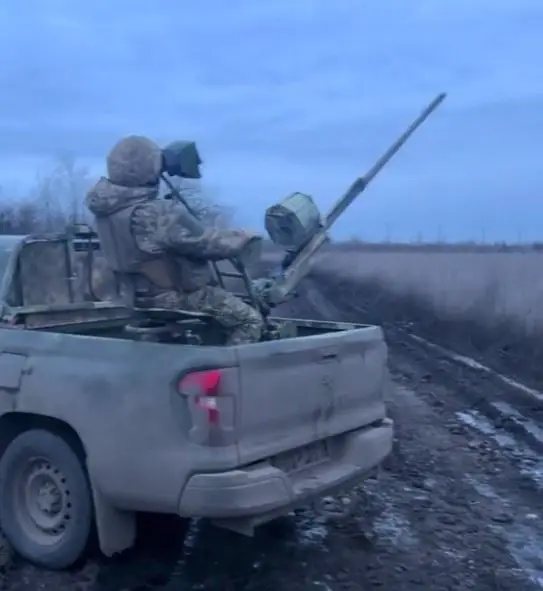
With a rate of fire of 750–800 rounds/min, the practical rate of fire of the Yugoslav M75 is comparable to the Soviet 14,5 mm ZGU-1, but is somewhat inferior in armor penetration, range and shooting accuracy. At the same time, a 20-mm fragmentation-incendiary projectile, compared to a 14,5-mm MDZ bullet, has a greater destructive effect when fired at targets unprotected by armor.
23-mm anti-aircraft guns ZU-23
Today, the most common anti-aircraft guns in the Armed Forces of Ukraine are the 23-mm twin ZU-23, used both in a towed version and installed on various vehicles and armored vehicles.
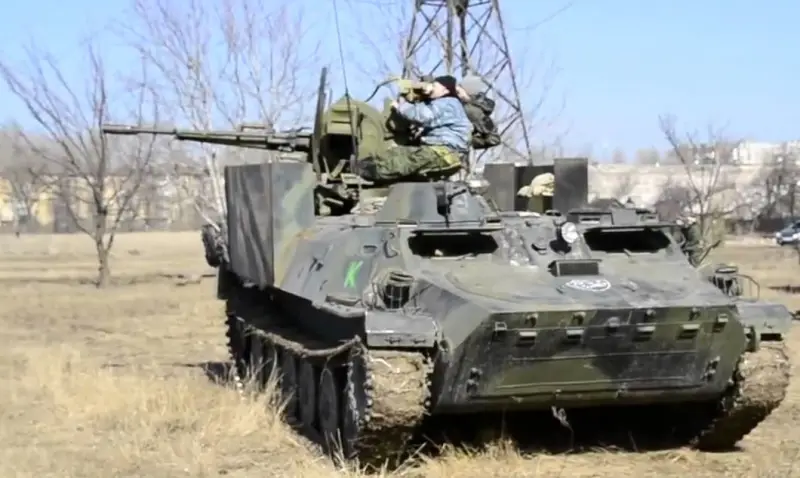
In combat position, the ZU-23 weighs about a ton. The total rate of fire is up to 1 rounds/min. Range against air targets is 800 m, height reach is up to 2 m. An armor-piercing incendiary-tracer projectile weighing 500 g has an initial speed of 2 m/s and at 000 m normal is capable of penetrating steel armor up to 190 mm thick. The high-explosive fragmentation incendiary projectile weighs 970 g and is loaded with 1 g of explosives.
However, the lack of special anti-aircraft fire control equipment and very simple sighting devices negatively affect the effectiveness of anti-aircraft fire. The probability of being hit when firing at a target flying at a speed of 300 m/s does not exceed 0,02.
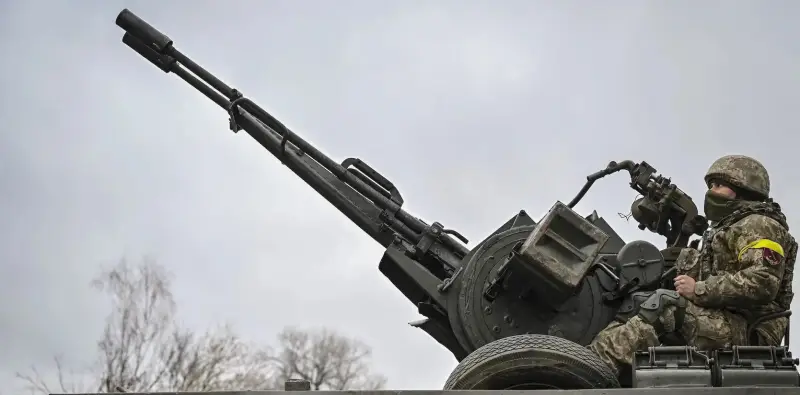
As of mid-February 2022, Ukraine had approximately three hundred ZU-23. It is stated that the Ukrainian industry has mastered the independent production of 23-mm anti-aircraft guns, including 2A14 guns. However, production rates are low.
In 2022–2023 Poland and Finland supplied their own versions of 23-mm anti-aircraft guns and ammunition for them. Taking into account imported ZU-23, the number of ZU-23 in the APU can reach 500 units.
The Polish ZU-23-2CP was produced under Soviet license since 1972 at a plant in Tarnow. According to expert estimates, at the end of 2021 there were about 400 installations in the combat units of the Polish Army and in warehouses.
Polish 23-mm anti-aircraft guns have been modernized several times. There are several variants in service, differing mainly in sighting devices, as well as the presence or absence of launchers for short-range guided anti-aircraft missiles.
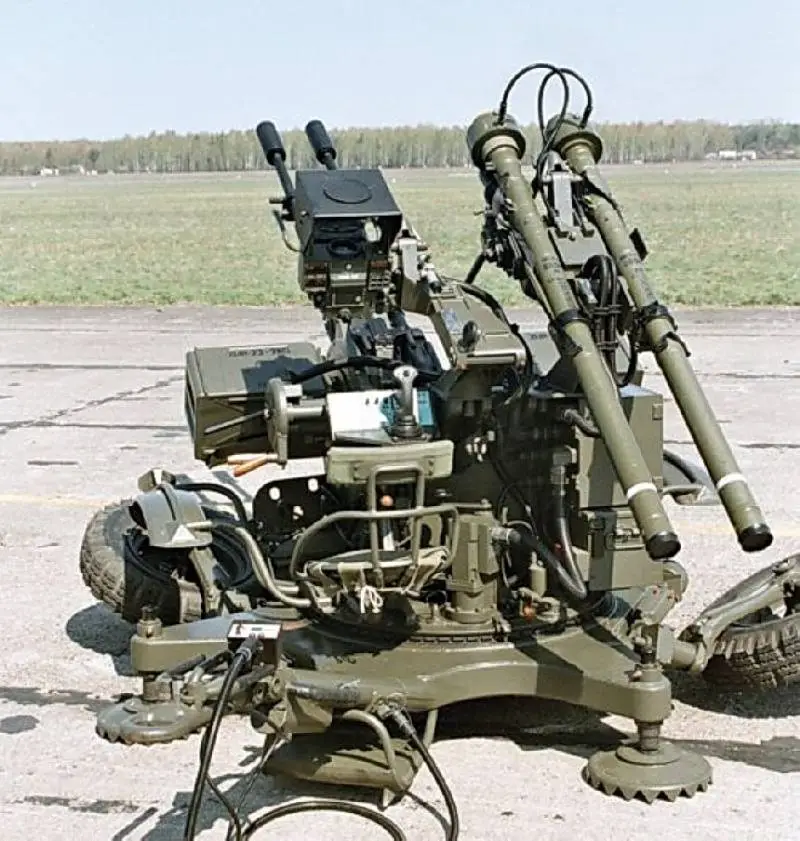
The ammunition load includes sub-caliber armor-piercing incendiary and armor-piercing incendiary-tracer shells with increased initial velocity. According to information published in Polish sources, the efficiency of the modernized installations compared to the original ZU-23 has increased by 3–5 times.
After the introduction of anti-aircraft missiles, the firing range at air targets exceeded 5 m and it became possible to destroy air targets flying at speeds of up to 000 m/s. The probability of hitting air targets with artillery fire has more than doubled.
In the 1970s, Finland acquired four hundred 23-mm towed anti-aircraft guns from the USSR, which were put into service under the designation 23 Itk 61. According to Military Balance 2021, the total number of 23-mm guns at the disposal of the Finnish army was 300 units.
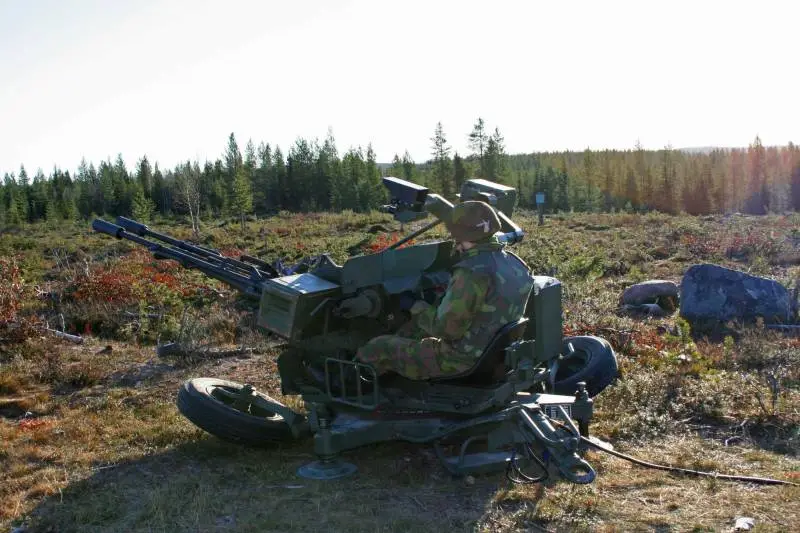
At the end of the 1990s, a significant part of the Finnish ZU-23 was modernized. The installations were equipped with a ballistic processor, a thermal imager and a laser rangefinder. This made it possible to approximately double the efficiency. After the upgrade, 23 ItK 61 became known as 23 ItK 95.
40-mm automatic anti-aircraft guns Bofors L70
At the beginning of last year, publications appeared in a number of Russian media that Sweden supplied Ukraine with obsolete 40-mm Bofors L60 anti-aircraft guns from the Second World War.
Personally, I have this one news caused bewilderment, since there were no such anti-aircraft guns left except in museums in Sweden. Later it became known that the authors of our news publications were in a hurry, and we are actually talking about much newer 40-mm towed Bofors L70 anti-aircraft guns, transferred by Lithuania (36 units) and Holland (17 units).
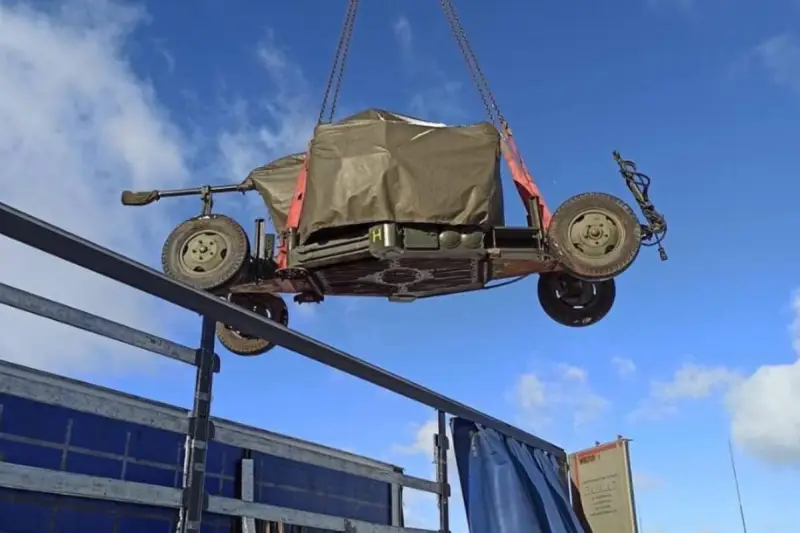
The Bofors L70 is a development of the Bofors L60 anti-aircraft gun, which was widespread during World War II, but more powerful ammunition is used to fire the Bofors L70. The weight of the anti-aircraft installation without additional optoelectronic and radar guidance systems is 4 kg. A fragmentation projectile weighing 800 g accelerates in a barrel 870 mm long to 3 m/s. Effective slant firing range against air targets is up to 245 m.
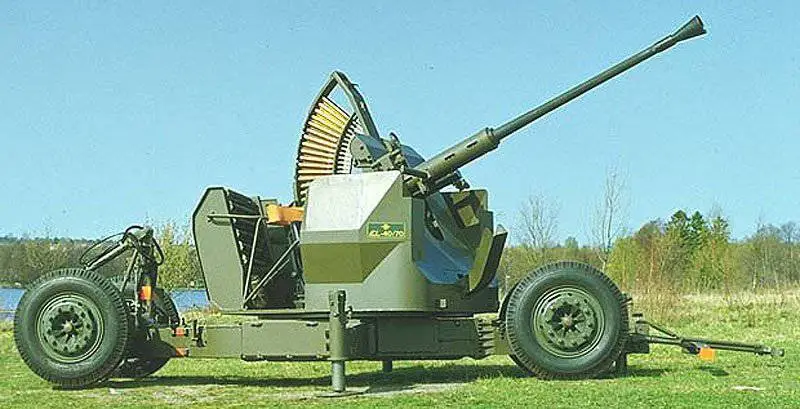
In 1953, the Bofors L70 was adopted as the standard NATO anti-aircraft gun and was produced in thousands of batches. Over the years of production, several variants were created that differed in power supply and sighting devices. The latest modifications had a rate of fire of 330 rounds/min, and the number of rounds in the ammunition load was increased from 16 to 26. New ammunition is available for these guns, including sub-caliber and fragmentation with remote detonation.
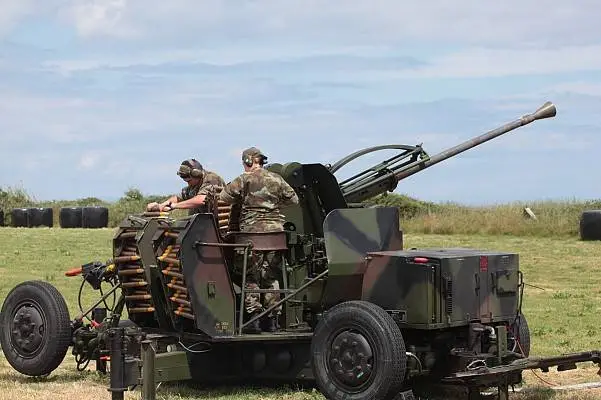
In a number of countries, effective radar or optoelectronic systems are used to control the fire of Bofors L70 guns. Thus, in the Netherlands, anti-aircraft batteries include Flycatcher gun guidance stations (KL/MSS-6720), with optoelectronic and radar search and guidance channels.
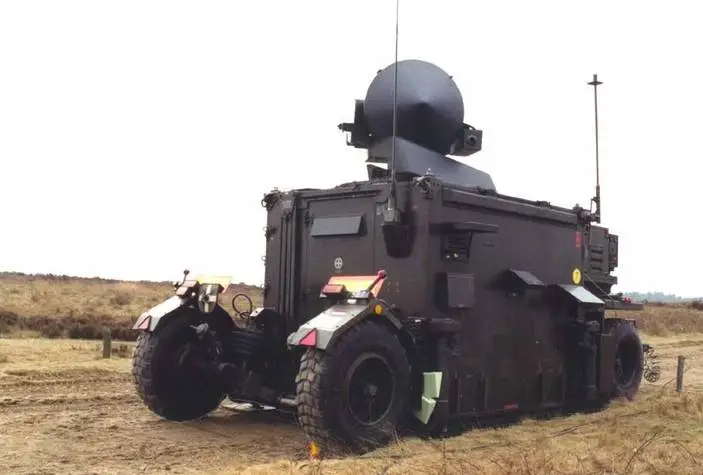
On the roof of the towed van there are search radar and radar range finder antennas, as well as a television camera. After processing the target data, it is transmitted in the form of telecode information via a VHF channel to receivers located on anti-aircraft guns, which can be 1 m away from the Flycatcher station.
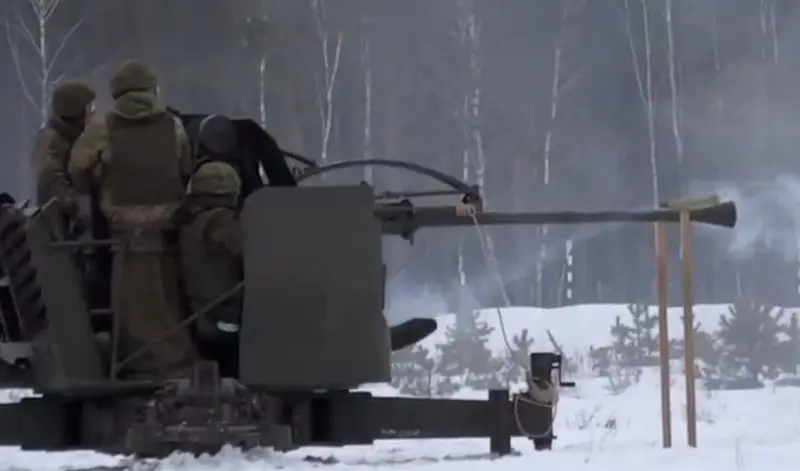
Bofors L70 automatic guns, combined with modern detection and guidance equipment, are capable of successfully combating aircraft operating at low altitudes, including drones and cruise missiles. According to available information, these 40-mm anti-aircraft guns are used to cover important stationary objects.
57-mm anti-aircraft guns AZP-57
As mentioned above, by the time the special military operation in Ukraine began, there were about two hundred 57-mm guns of the S-60 anti-aircraft artillery system in warehouses, and in 2022–2023. a significant part of the AZP-57 automatic guns was returned to service.

The combat rate of fire of a 57-mm anti-aircraft gun is 80–90 rounds/min. Rate of fire – 120 rounds/min. Loading with a 4-shot clip. Weight of the gun – 4,8 tons. Crew – 8 people.
There are two main types of ammunition in the ammunition load: fragmentation tracer and armor-piercing tracer. The OR-281U fragmentation projectile weighing 2,81 kg contains 168 g of explosive and has a fragmentation zone of 5 m. This projectile is equipped with an impact fuse with a self-destructor. Self-destruction occurred 15–16 seconds after leaving the barrel at a distance of 6,5–7 km.
The BR-281U armor-piercing tracer projectile weighing 2,85 kg has an initial speed of 1 m/s and at a distance of 000 meters at an impact angle of 1° is capable of penetrating an armor plate 000 mm thick. Such armor penetration indicators make it possible to confidently fight armored personnel carriers and infantry fighting vehicles, as well as hit the main combat vehicles on board. Tanks.
For its time, the S-60 anti-aircraft artillery system had good data, which allowed it to remain in service for a long period of time. Initially, the SON-9A and PUAZO-6-60 gun guidance radar was used to control the fire of an anti-aircraft battery of six guns.
In the early 1970s, the Vaza-1 radio instrument complex was introduced on the Ural-375 chassis. After this, the effectiveness of anti-aircraft fire increased, and the range of tracking air targets increased from 25 to 40 km (the detection range of the SON-9A was 40 km, the RPK Vaza-1 was 55 km). The probability of hitting a target for firing a battery with an RPK is 0,1–0,15. One hit by a fragmentation tracer shell on any combat aircraft is enough to cause fatal damage to it.
However, the Ukrainian Armed Forces are not able to effectively use 57-mm anti-aircraft guns for their intended purpose. Gun crews can only conduct ineffective defensive anti-aircraft fire or fire at ground targets. This is due to the fact that during the years of independence, all the Vaza-1 RPKs, the electronic units of which had boards with radio components containing precious metals, were lost.
Most of the Ukrainian AZP-57s are installed on trucks and are used for fire support of ground units.
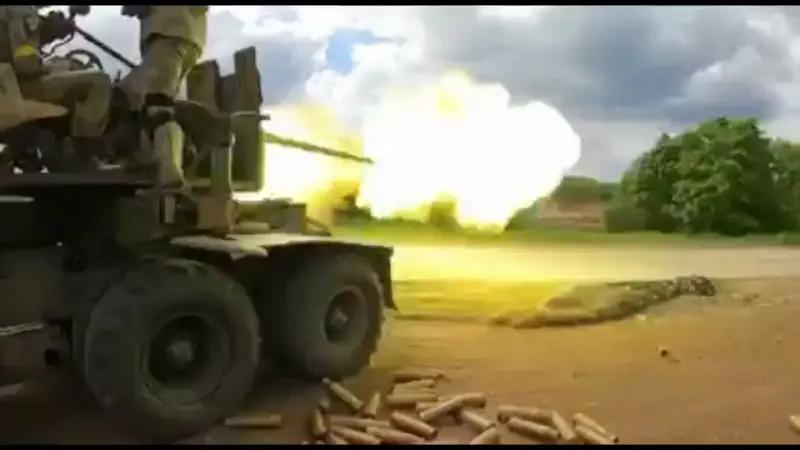
Anti-aircraft 57 mm guns could potentially come from Bulgaria, Poland and Romania. Romanian and Polish AZP-57s still serve in combat units of military air defense. This is due to the fact that in the Romanian and Polish armies, outdated anti-aircraft fire control radars SON-9A and RPK Vaza-1 have been replaced with modern sighting and search optoelectronic systems of their own production.
If Romania and Poland, together with 57-mm anti-aircraft guns, decide to transfer new fire control stations to Ukraine, then these anti-aircraft guns, despite their venerable age, can pose a great danger to Russian combat aircraft, helicopters and drones.
100-mm anti-aircraft guns KS-19M2
In 2022, the recovery from storage and restoration of 100-mm KS-19M2 guns began. According to available information, by mid-2023, 11 guns were returned to service.
By the standards of the 1950–1960s, 100-mm anti-aircraft guns coupled with PUAZO had good characteristics. With an artillery mount weighing about 9 kg, it could fire at targets flying at an altitude of up to 500 km, firing 14 shots per minute. The use of fragmentation shells with a radar fuse significantly increased the likelihood of hitting a target. Firing data was supplied by SON-15A gun-guided radar stations.
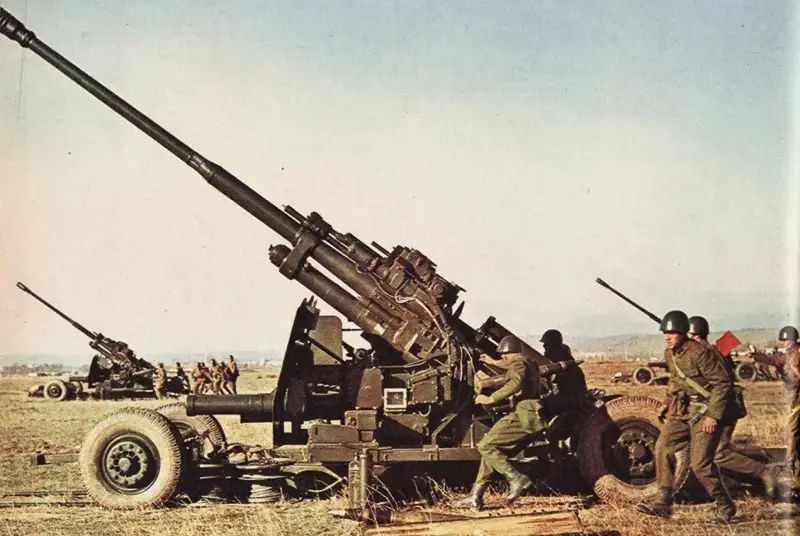
All elements of the complex at the combat position were connected to each other by electrical wires. The guns in the battery were aimed centrally at the lead point by a hydraulic power drive GSP-100 from PUAZO; there was also the possibility of manual guidance.
Currently, there are no operational gun guidance stations left, and all Ukrainian KS-19M2 have been transferred to field artillery. Several 100 mm anti-aircraft guns are installed on heavy off-road trucks.
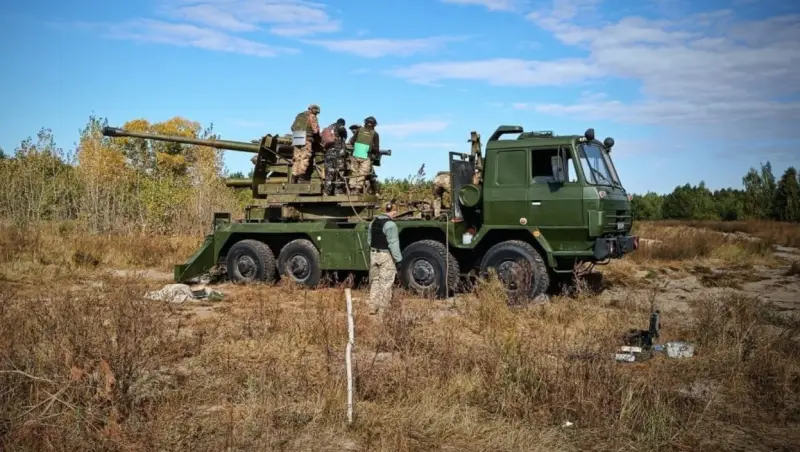
Improvised wheeled self-propelled guns and towed artillery mounts fire high-explosive fragmentation shells from the BS-3 field gun and the D-10T tank. Theoretically, the KS-19M2 guns, when equipped with shells with remote fuses, can conduct barrage fire at aerial targets, but this is hampered by poor training of crews and the inability to accurately measure speed and distance.
Self-propelled anti-aircraft guns ZSU-23-4 "Shilka"
During the division of Soviet military property, Ukraine received a large number of ZSU-23-4 Shilka anti-aircraft self-propelled guns. In 2014, there were about two hundred vehicles in the troops and in reserve. As of the second half of 2021, the Armed Forces of Ukraine had up to forty Shiloks in good condition.
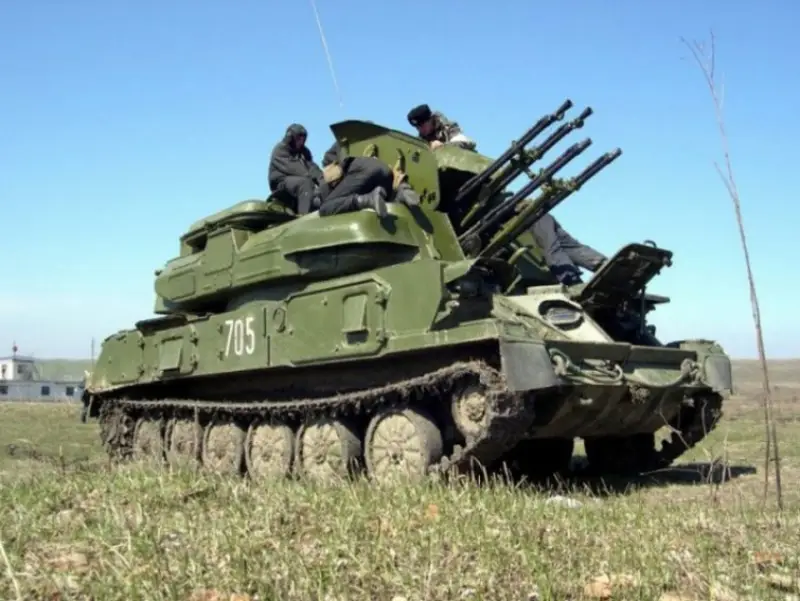
At the time of its appearance in the mid-1960s, Shilka had no equal. Anti-aircraft self-propelled guns, protected by light armor, could not only cover tank and motorized rifle units on the march and in concentration areas, but also, thanks to the presence of the RPK-2 radar instrument system, independently search for targets at any time of the day and shoot at air targets in automatic mode - the target was accompanied by a complex in range and angular coordinates, the calculating device determined the required lead, allowed fire when the target reached the effective firing range.
There is also a semi-automatic mode - the gunner combines the sighting crosshair with the target, the radar determines the range - everything else is calculated by the automation. However, the Shilka is capable of working with an optical sighting device, but its firing efficiency is lower.
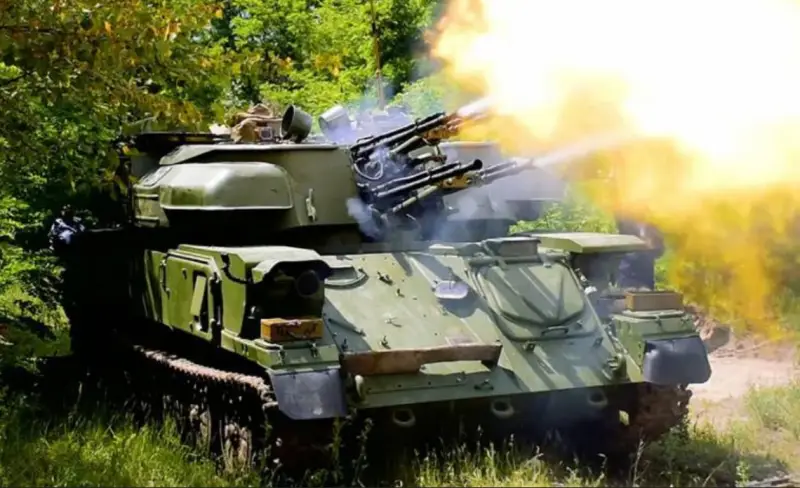
The self-propelled gun is armed with four 23-mm AZP-23 automatic cannons with a total rate of fire of 3 rounds/min. Ammunition - 400 rounds. Firing range – up to 2 m. Speed on the highway – up to 000 km/h. Power reserve – up to 2 km. Weight – 500 tons. Crew – 50 people.
Due to the moral and physical obsolescence of the radio instrument complex and the poor technical condition of most of the machines stored in the open air, in 2015 a decision was made to overhaul and modernize them. The Ukrainian modernized Shilka received the designation ZSU-23-4M-A.
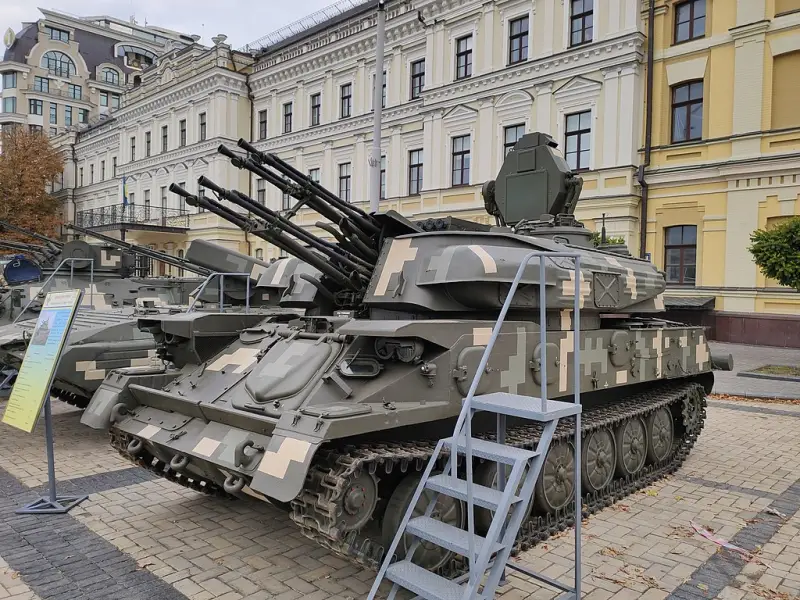
During the restoration and modernization, the RPU-2 radar instrument complex was replaced by the multifunctional Rokach-AS radar, a new optoelectronic sighting and search system and a digital ballistic computer were installed. However, apparently, there were few modernized Shiloks in the Ukrainian army, and a significant part of the existing self-propelled anti-aircraft guns were lost during the fighting.
In 2023, the issue of supplying radically modernized Polish anti-aircraft self-propelled guns ZSU-23-4MP Biala was discussed, but how the negotiations with Warsaw ended is unknown.
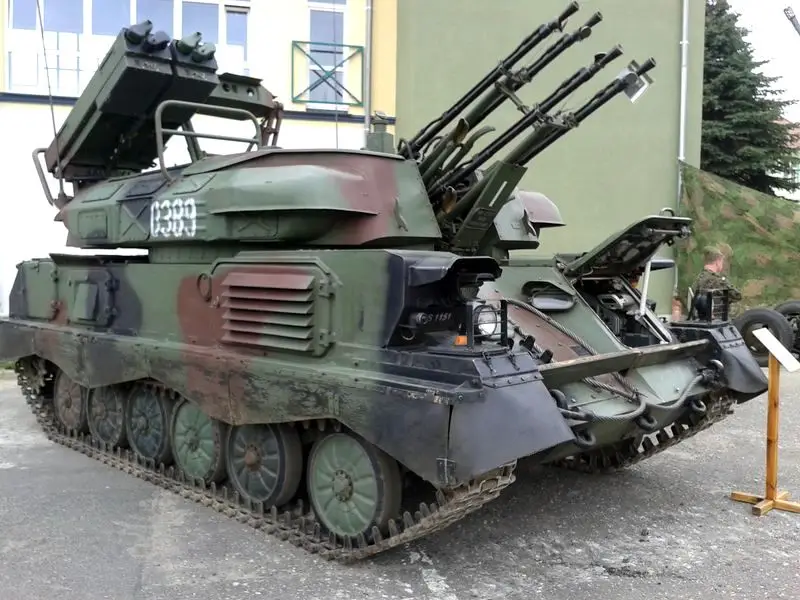
ZSU-23-4MP Biala
The ZSU-23-4MP Biala uses passive optoelectronic equipment with a thermal imaging channel to search for air targets. A digital fire control system, combined with a laser rangefinder, allows you to fire at air targets in semi-automatic mode. The abandonment of the radar reduced the ability to combat air targets in conditions of poor visual visibility, but the stealth and survivability of the installation as a whole increased. Automation of the process of searching for an air target and using weapons made it possible to reduce the crew to three people.
The commander and driver received modern night vision devices. New sighting and search equipment and partial replacement of ammunition (new projectiles with increased initial velocity were added) made it possible to expand the effective firing zone from cannons to 3,5 km. The armament includes four Grom missiles, which can hit aircraft at a range of up to 5 m.
Gepard self-propelled anti-aircraft guns
Supplies from Germany of 35-mm anti-aircraft self-propelled artillery systems have long been hampered by the lack of the necessary volumes of ammunition. The problem with the shells was solved for some time after the Norwegian company Nammo announced its readiness to provide them.
At the end of July 2022, it became known that the first batch of three Gepard self-propelled guns had arrived in Ukraine. In the second half of September 2022, a video of the movement of the Gepard installation along with the Osa-AKM anti-aircraft missile system in the Kharkov region appeared. Open sources say that the Ukrainian Armed Forces may have 46 Gepard 1A2 self-propelled guns.
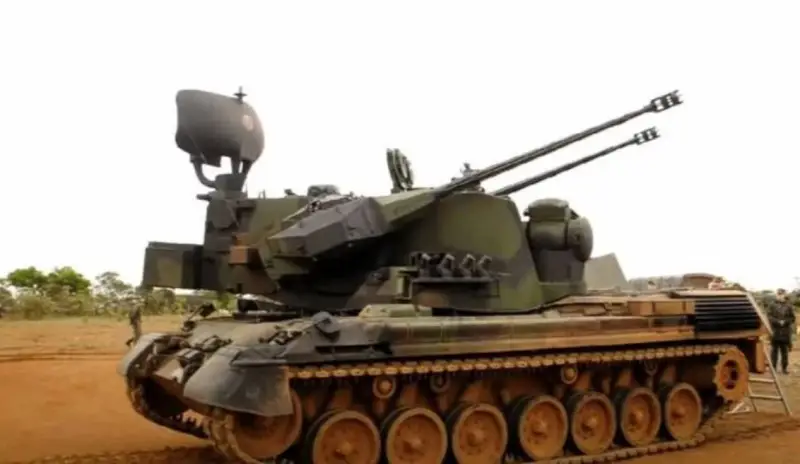
Western experts consider the Gepard to be the best self-propelled anti-aircraft artillery system produced en masse in NATO countries. At the same time, Russian media call them obsolete and write that the Cheetahs do not pose any threat to Russian aviation and are only limitedly suitable for firing at ground targets. The truth, as always, is in the middle.
The chassis of the obsolete German Leopard 1 tank was indeed used as the base for the Cheetah. The turret is covered with armor that reliably protects against bullets of a caliber of no more than 12,7 mm and large fragments. Apparently, the hull retained the same armor as the base Leopard 1 tank – hull front 50–70 mm, side 35–45 mm.
Indirect evidence of the high security of the hull is the mass of the SPAAG. In combat position, the installation weighs 47,5 tons - approximately the same as the base model of the tank. Diesel engine with a power of 830 hp. With. provides a maximum highway speed of up to 65 km/h. On dirt roads – 30 km/h. Crew – 3 people.
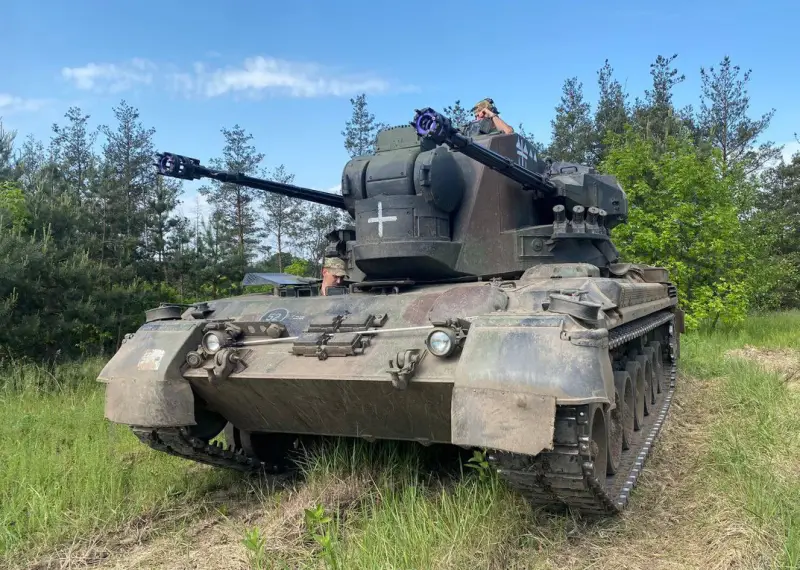
The armament consists of two 35-mm Oerlikon KDA cannons with a total rate of fire of 1 rounds/min. The ammunition load of each gun includes 100 unitary rounds. A fragmentation projectile weighing 340 g leaves the barrel at a speed of 550 m/s. Armor-piercing incendiary and fragmentation incendiary shells are used against air targets. To combat armored vehicles, sub-caliber shells are designed, with armor penetration up to 1 mm at a distance of 175 m.
The maximum firing range against air targets is 4 m. The ceiling is 000 m. The effective firing range against targets flying at speeds up to 3 m/s is 000 m. Detection of air targets is carried out by the MPDR-400S centimeter-range pulse-Doppler surveillance radar with a range of up to 2 km. After detecting an air target, it is tracked by a radar sight-rangefinder.
Firing data is calculated by a ballistic computer. In case of failure of the radar equipment and for firing at ground targets, there is an optical sight. Late production vehicles can be equipped with a laser rangefinder combined with a fire control system. Western sources say that the probability of hitting a supersonic target is more than twice as high as that of the Shilka.
Thus, it is worth recognizing that the far from modern Cheetah is suitable not only “for shooting at ground targets.”
Currently, the reserves of self-propelled units of this type available in Germany have been practically exhausted, and therefore a search for self-propelled guns in other countries is underway. Potential sellers include Brazil, Romania and Jordan.
Information